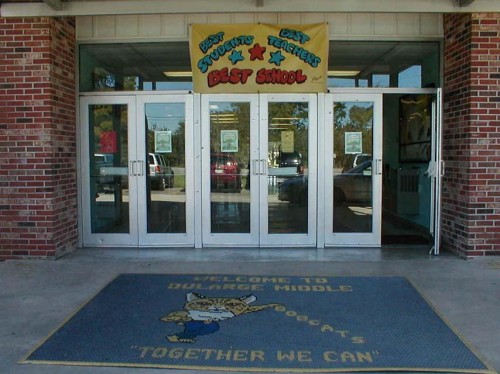
Dularge Middle sets bar for educating the poor
February 22, 2011Thursday, Feb. 24
February 24, 2011Gov. Bobby Jindal’s latest fundraising report offers more than 1,300 pages of information on his mighty effort to raise campaign cash.
A review of the report will tell you that Jindal’s got more than $9 million in the bank for his campaign, that he’s attracted donors from all 50 states, that 360 people and businesses gave the maximum $5,000 contribution in 2010 and that the governor’s pouring money into a massive campaign structure with tentacles across the country.
Despite the wealth of information that can be found in those pages, however, many other critical campaign details are missing, like insight into who’s hosting the big-ticket fundraisers and who’s attending them to get special face time with the governor as he rakes in campaign cash.
Jindal’s not leaving out information he’s expected to provide under Louisiana’s campaign finance law. He’s complying with statute. That level of detail isn’t required, leaving a large gap in what the public can truly learn about politicians’ bids for office.
The Republican governor’s latest report, detailing contributions and spending from 2010, was filed last week with the Louisiana Ethics Administration Program, along with finance reports from all the statewide elected officials. Those reports are considered a bellwether of the strength of the officials’ re-election campaigns before the Oct. 22 primary election.
Jindal’s campaign finance documents provide a classic case to demonstrate what information voters can glean from the data – and just how much is lacking.
From reading Jindal’s report, a viewer can tell he’s a formidable opponent who will be difficult to beat when someone decides to get in the race against him.
The governor raised $3.4 million last year and has brought in $12 million total for the election cycle. He’s got $9.2 million cash on hand, and he’s nowhere near done fundraising with eight months remaining before the election.
A person combing through the document can find that more than 6,700 people and businesses contributed to Jindal’s campaign in this latest fundraising period, donating everything from $5 to $5,000. The contributions include a mailing address and a date.
Combine all of the reports together, and someone can tally that more than 15,000 people and companies have chipped in to the governor’s re-election effort.
But try to figure out who donated money at a specific Jindal fundraiser and who was just mailing in donations because they like the governor, and at best you’ll be trying to match dates with the few events you’ve heard of, and at worst you’ll be out of luck altogether.
Try to figure out what these contributors do and whether they may have a vested interest in having Jindal in office, and you’ll be left to Google searches and newspaper archives.
Try to contact donors to find out why they made a contribution, and you’ll be left to online phone books and other directories to try to match a name and an address with a contact number to track them down.
Catering bills and event expenses don’t have to be billed the day of an event, and donations could be turned in days or weeks after a fundraiser. Expenses are listed under generic categories that don’t provide great detail about what work a person or company might really do.
Some things can be pieced together with lengthy research, dedication and extensive spreadsheet manipulation.
For example, an in-depth review of the millions Jindal’s spent so far on his campaign shows the governor’s using an extensive network of GOP fundraising and consulting firms that could help launch future political campaigns on a national stage.
However, it’s difficult – and in some instances, nearly impossible – to connect dots about the true inner workings of the campaign unless Jindal wants to provide those details himself.
His office hasn’t been terribly forthcoming with that level of nuanced details.
Jindal’s handlers don’t need to be. They’re meeting the requirements under Louisiana law, with all the holes allowed.
EDITOR’S NOTE: Melinda Deslatte covers the state Capitol for The Associated Press.








